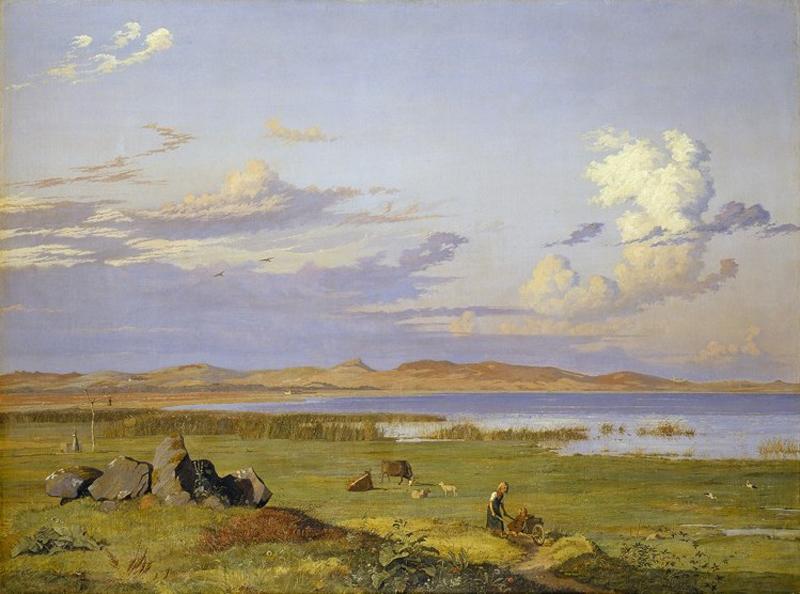As a first step in an increased focus on art research, the New Carlsberg Foundation funded 15 PhD scholarships in 2012–2014. Among them was the research project En fælles forestillet nation. Dansk landskabsmaleri 1807-1875 (A shared imagined nation. Danish landscape painting 1807–1875), which emerged as a collaboration between Fuglsang Kunstmuseum and Ribe Kunstmuseum based on both art museums’ extensive collections from the ‘golden age’ in Danish art history.
Gertrud Oelsner defends her PhD thesis on 8 February 2017 at 13.00 at the National Gallery of Denmark. The viva, which is held in Danish, is open to the public.
The golden age of Danish painting has long been a topic of interest to scholars and the general public, but Gertrud Oelsner’s PhD project is the first in-depth study of a broad selection of pictures produced between 1807 and 1875 and exhibited at Charlottenborg. Based on her studies of thousands of landscape paintings, sketches, prints and craft objects from the period Oelsner reaches across the dividing line that is often drawn in Danish art history between the first half of the 19th century, known as the golden age, and the second, which is traditionally considered a period of decline and the overture to the modern era.
Oelsner also delves into the portrayal of geographic regions and specific locations. She includes both artist-decorated atlases, illustrated topographic books and travel literature and points out that the archetypal image of Denmark was subject to continuous negotiation throughout the century with varying emphasis on landscapes from Zealand and Jutland. The interplay between landscape paintings and political trends that shaped the notion of a mono-cultural nation state with a common past and legacy thus also became a conflict zone in the struggle about the right to define Denmark’s visual identity.
